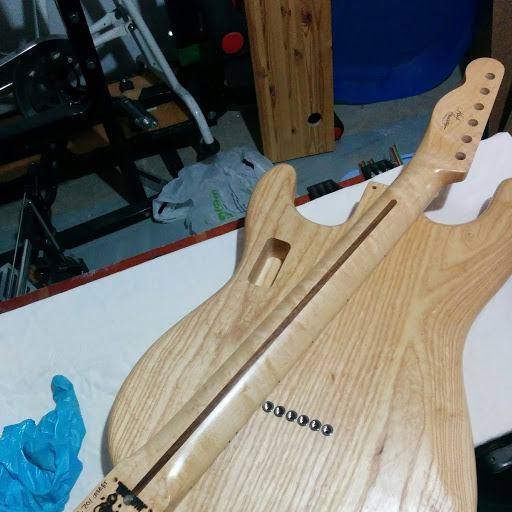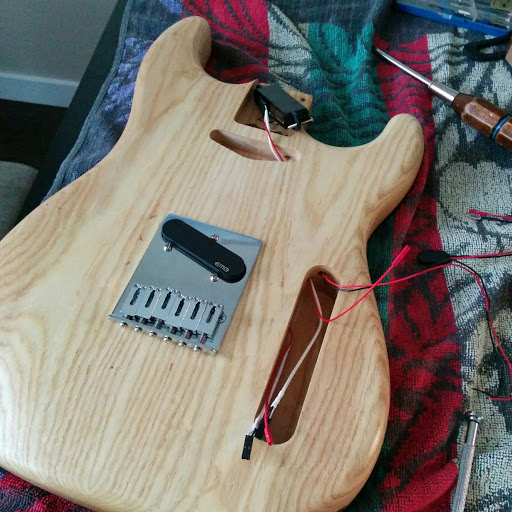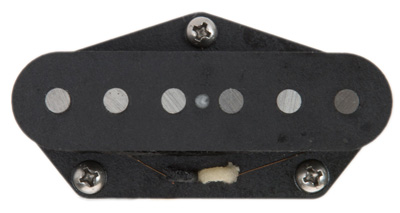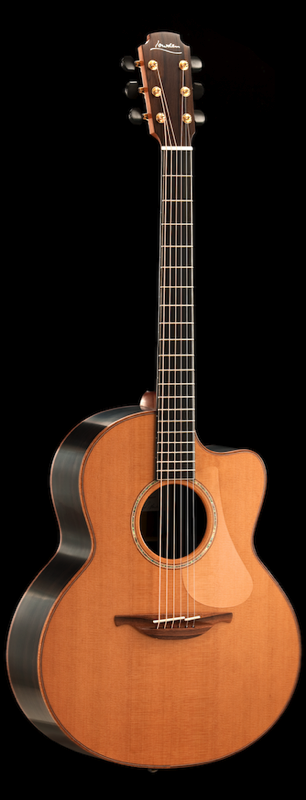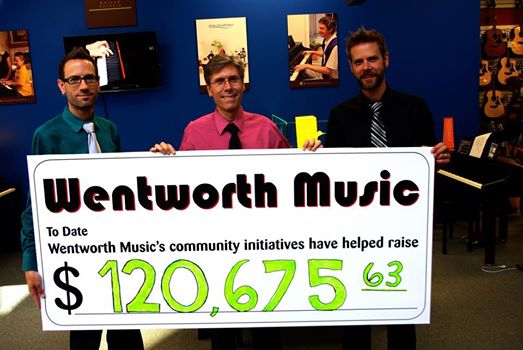Sun 25 Aug 2019
The Trip to Abbey Road, Part 1
Posted by Karl under Mid-Life ManComments Off on The Trip to Abbey Road, Part 1
For a lot of people my age, you discovered that music was really important when you discovered The Beatles. Everything about them at the time was fresh, exciting, positive and full of energy. From the songs to the records to the hair, the suits, the boots, the wit, the slang…it couldn’t all have been preconceived and then just conjured up by some smart marketing people. There was talent and there was maybe some luck, but The Beatles were the right thing at the right moment.
Most of the records that The Beatles recorded were done at just one recording studio, Abbey Road Studios in London. That is ground zero for fans of Beatles’ records. The studio still stands today and is still in constant use. And on July 4, 2019, Gail and I, along with nearly a dozen friends, went to our musical mecca. We booked a ten-hour session in the room, Studio 2; the room where the magic happened.
We chose four original songs plus two songs we didn’t write, and got to work at 10AM to have a go at recording those songs. Our session was all over by 8PM, so if you’ve spent much time recording songs in a studio, you’ll understand our schedule was tight. Gail and I flew out from YLW, Kelowna International Airport, on Monday, July 1st, in the early afternoon. We flew to Vancouver, and then non-stop to Gatwick Airport, arriving just after 10AM on Tuesday morning, July 2. We took the Gatwick Express train to Victoria station, and then a taxi to our flat in Notting Hill, near Portobello Road.
Once we had unpacked we went for a walk around our neighbourhood.
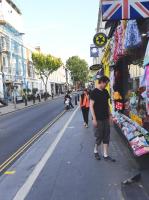
We were so excited to be in London. The weather was perfect for walking around, and we loved all the old architecture, from the houses to the churches and the quaint little shops. We picked up a few groceries, mostly so we could make some breakfast and, of course, make coffee.
The next morning, Wednesday, July 3rd, we walked over to Abbey Road Studios. It took nearly an hour, and we marveled along the way at the architecture (as we did every day in London). At Abbey Road, we met up with Stu and Teri MacDonald from Vancouver. We visited Abbey Road’s gift shop, then walked over to the St. John’s Wood underground station. A helpful attendant at the station assisted me and Gail to get our Oyster cards loaded up for riding public transit. We rode down to the Tower of London, and along the way Stu explained the tube maps on the trains and how it all worked. It’s brilliantly simple.
When we surfaced behind the Tower of London, we walked over the Tower Bridge, where we met up with Peter Leung and Smoky Senechal for lunch. We went to a place called Vapiano (there are a few of them around London). After lunch, Gail and I headed back to the train, and I was already feeling confident that we could navigate back to Notting Hill with no problem. In fact, I was feeling so confident, that I decided we could take the tube to St. John’s Wood station the next day for our day in the studio. I’ve got to say Google maps works great for getting around London. I had downloaded the often-recommended app Visit London, but with Google maps, I always had good transit info.
We had decided to meet up at a quarter to nine. The studio had invited us to come in at 9 to start the session proper at 10. It only took us about 25 minutes in all to go from our flat at 13 Pembridge to the St. John’s Wood station. Gail grabbed a coffee to go there at the Helter Skelter kiosk. We ran into Hermann Fruhm (the lone pianist in our entourage) there, and together walked the few blocks down to the famous crosswalk and then over to the gate at the studio entrance. We hung around until the whole gang had arrived, stopped for a picture on the front steps, then in we went.
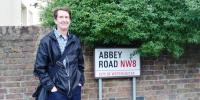

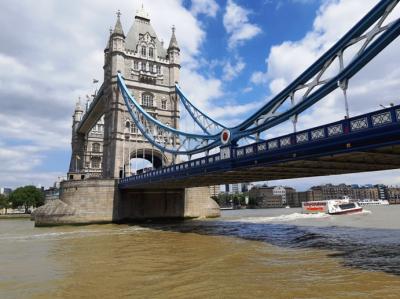
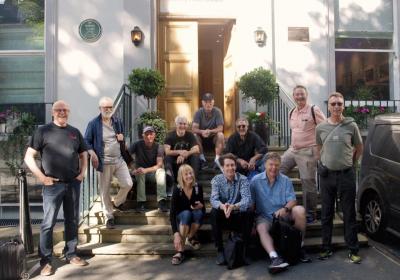
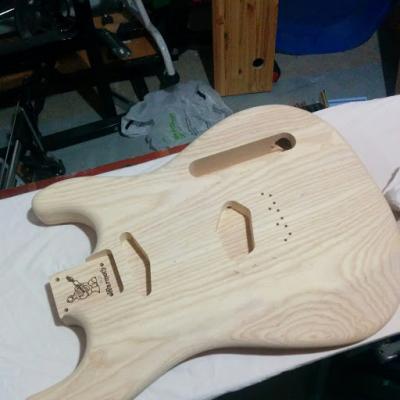
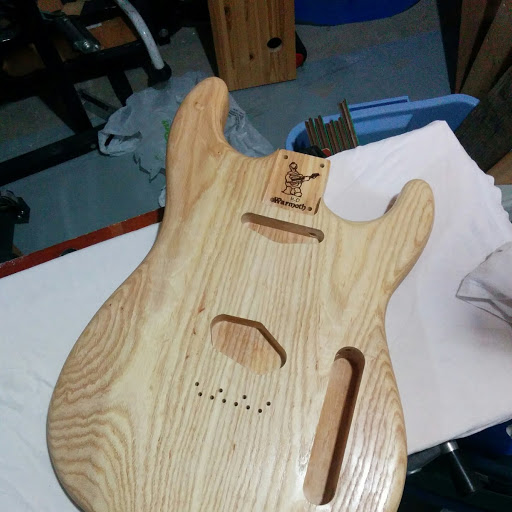 String ferrules installed, that’s a walnut stripe on the back of the neck.
String ferrules installed, that’s a walnut stripe on the back of the neck.